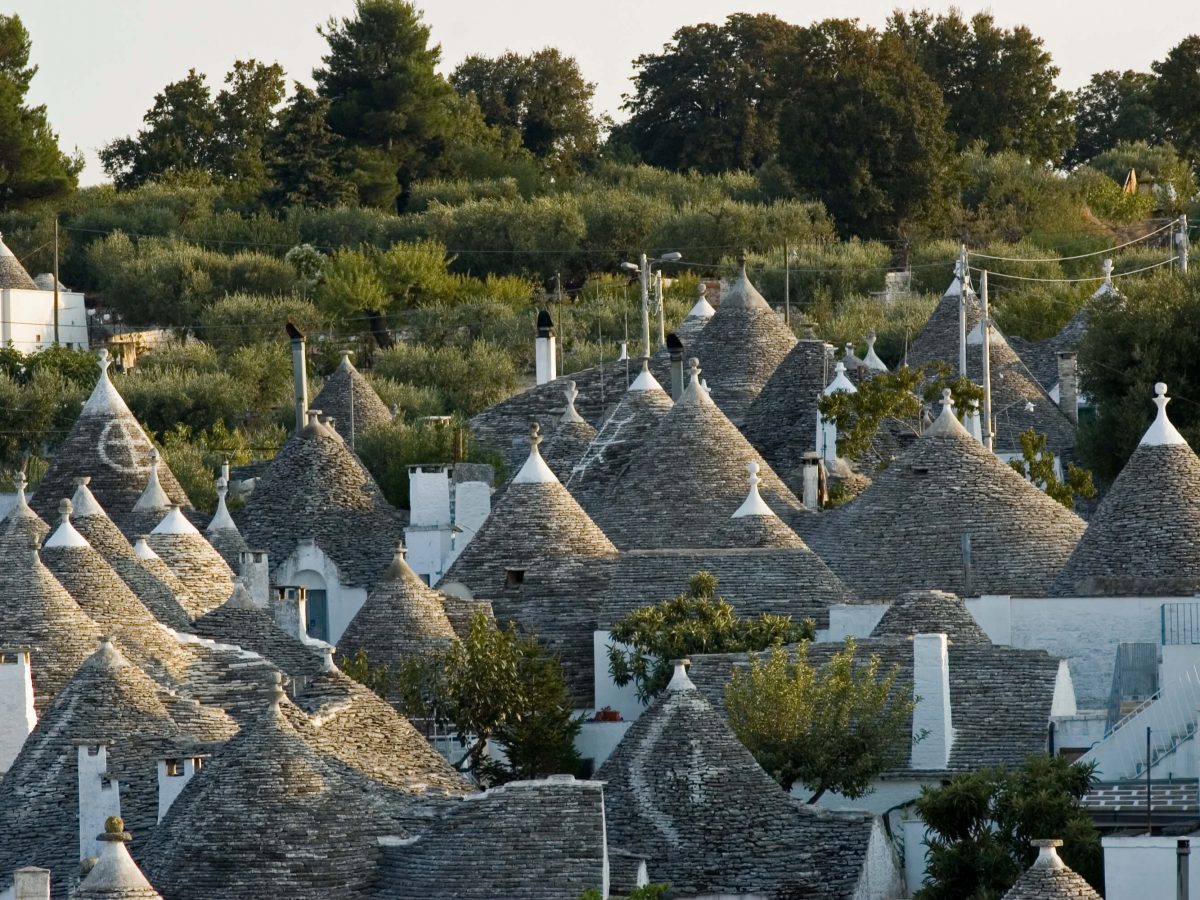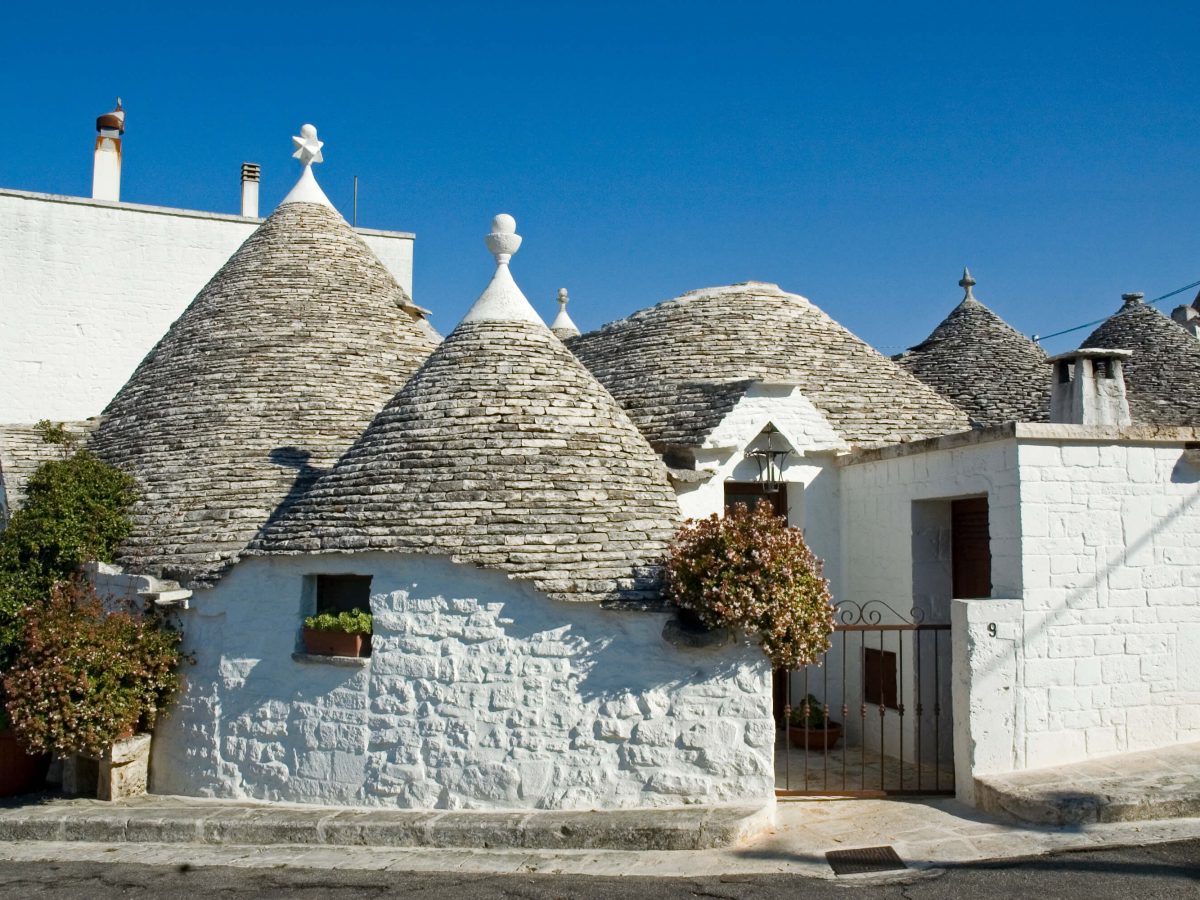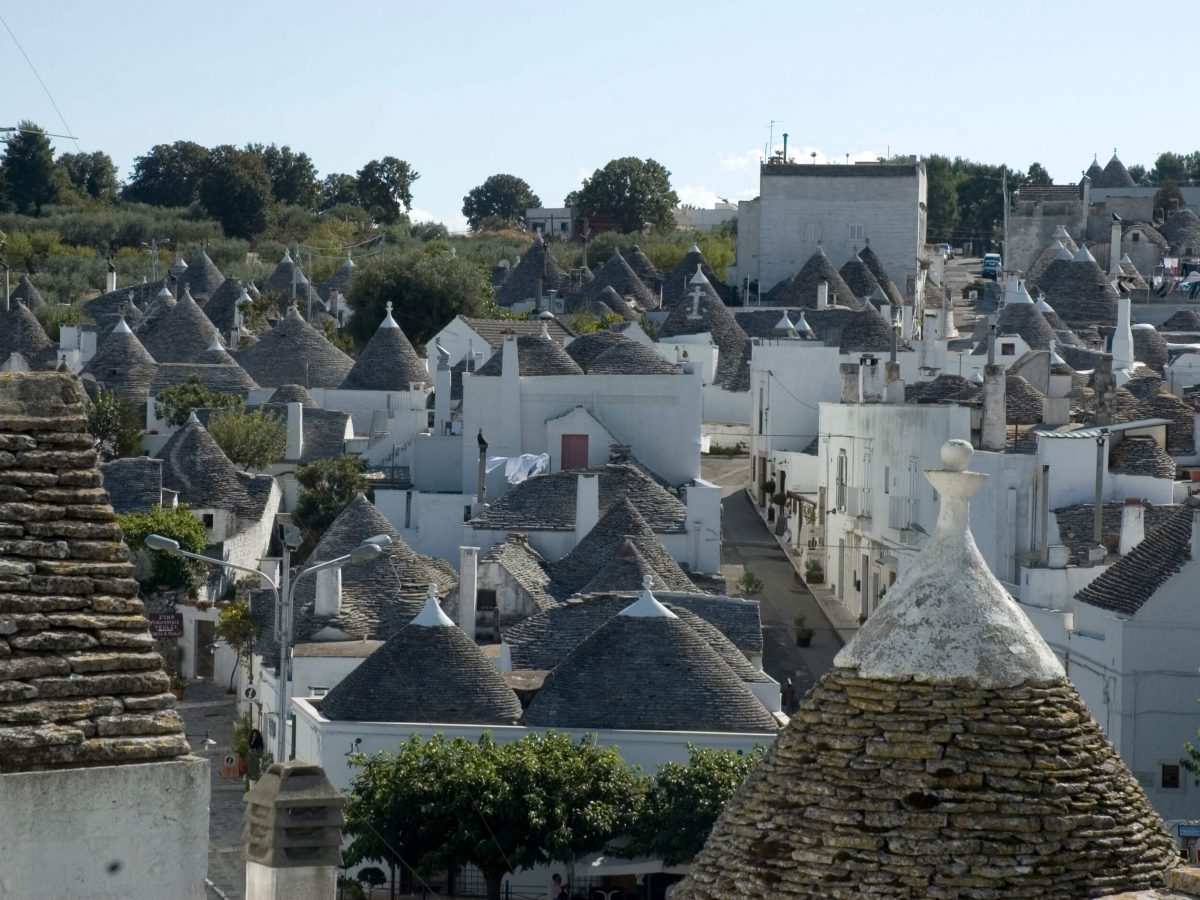The trulli, typical limestone dwellings of Alberobello in the southern of Puglia, are remarkable examples of corbelled dry-stone construction, a prehistoric building technique still in use in this region. Although rural trulli can be found all along the Itria Valley, their highest concentration and best preserved examples of this architectural form are in the town of Alberobello, where there are over 1500 structures in the quarters of Rione Monti and Aja Piccola. Trulli are traditional dry stone huts with a corbelled roof. Trulli were generally constructed as temporary field shelters and storehouses or as permanent dwellings by small-scale landowners or agricultural labourers. Trulli were constructed from roughly worked limestone excavated on-site in the process of creating sub-floor cisterns and from boulders collected from nearby fields and rock outcrops. Characteristically, the buildings are rectangular forms with conical corbelled roofs. The whitewashed walls of the trulli are built directly onto limestone bedrock and constructed using a dry-stone wall technique (that is, without use of mortar or cement). The walls comprise a double skin with a rubble core. A doorway and small windows pierce the walls. An internal fireplace and alcoves are recessed into the thick walls. The roofs are also double-skinned, comprising a domed inner skin of wedge-shaped stone (used in building an arch or vault) capped by a closing stone; and a watertight outer cone built up of corbelled limestone slabs, known as chianche or chiancarelle. The roofs of buildings often bear mythological or religious markings in white ash and terminate in a decorative pinnacle whose purpose is to ward off evil influences or bad luck. Water is collected via projecting eaves at the base of the roof which divert water through a channelled slab into a cistern beneath the house. Scattered rural settlements were present in the area of present day Alberobello around one thousand years ago (1,000 AD). The settlements gradually grew to form the villages of present day Aia Piccola and Monti. By the mid16th century the Monti district was occupied by some forty trulli, but it was in 1620 that the settlement began to expand.In 1797, feudal rule came to an end, the name of Alberobello was adopted, and Ferdinand IV, Bourbon King of Naples, awarded to Alberobello the status of royal town. After this time the construction of new trulli declined. Between 1909 and 1936 parts of Alberobello were protected through designation as heritage monuments.
The Trulli of Alberobello
Criterion (iii): The Trulli of Alberobello illustrate the long-term use of dry-stone building, a technique which has a history of many thousands of years in the Mediterranean region.
Criterion (iv): The Trulli of Alberobello are an outstanding example of a vernacular architectural ensemble that survives within a Historic Urban Landscape context.
Citerion (v): The Trulli of Alberobello is an outstanding example of human settlement that retains its original form to a remarkable extent.
Document
-
Documentazione
-
Documentazione
-
Documentazione
-
Documentazione
-
Documentazione
-
Mappa
-
Mappa
-
Mappa
-
Mappa
-
Mappa
-
Mappa
-
Sito Web
-
Sito Web
-
Video


